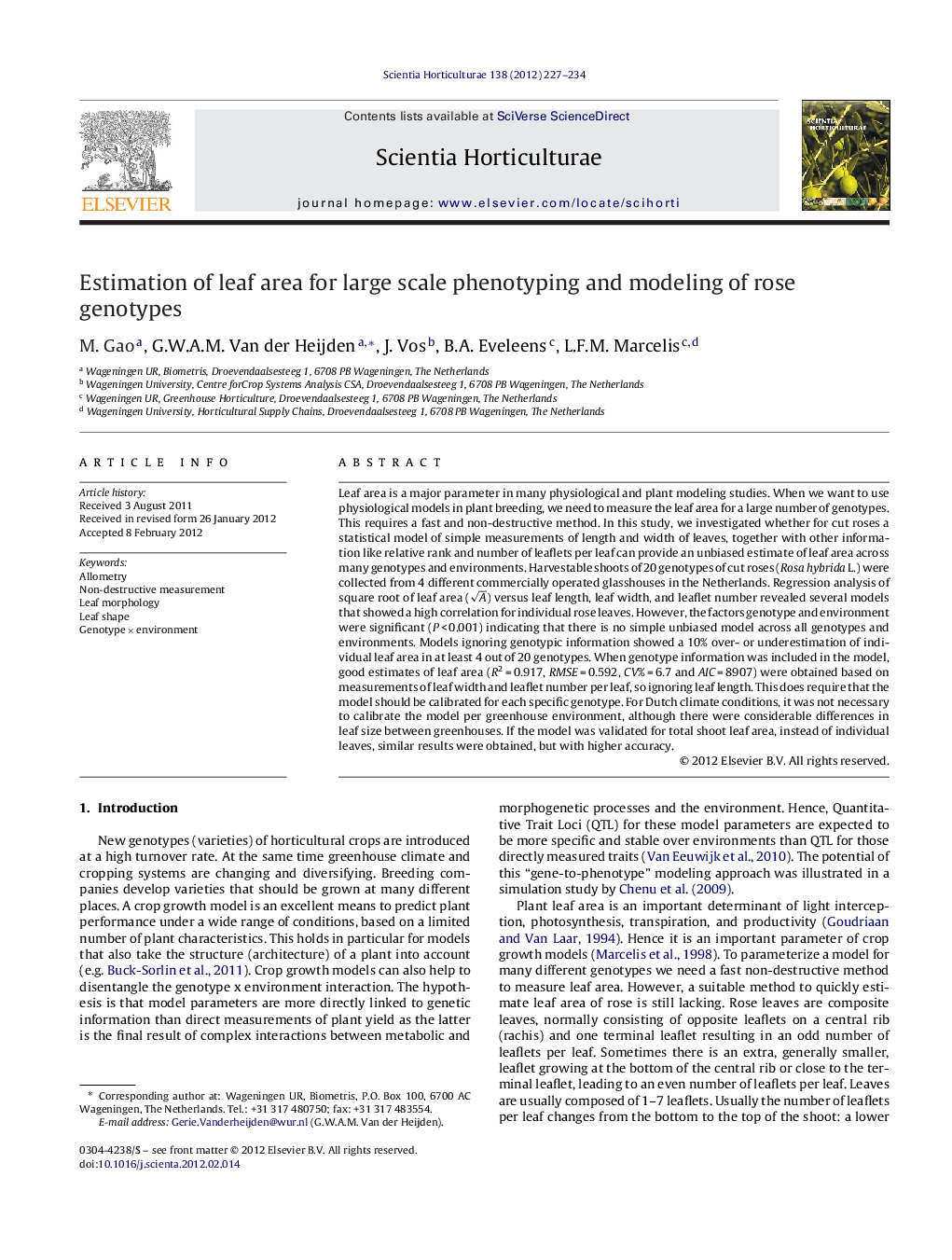| کد مقاله | کد نشریه | سال انتشار | مقاله انگلیسی | نسخه تمام متن |
|---|---|---|---|---|
| 4567717 | 1628860 | 2012 | 8 صفحه PDF | دانلود رایگان |

Leaf area is a major parameter in many physiological and plant modeling studies. When we want to use physiological models in plant breeding, we need to measure the leaf area for a large number of genotypes. This requires a fast and non-destructive method. In this study, we investigated whether for cut roses a statistical model of simple measurements of length and width of leaves, together with other information like relative rank and number of leaflets per leaf can provide an unbiased estimate of leaf area across many genotypes and environments. Harvestable shoots of 20 genotypes of cut roses (Rosa hybrida L.) were collected from 4 different commercially operated glasshouses in the Netherlands. Regression analysis of square root of leaf area (A) versus leaf length, leaf width, and leaflet number revealed several models that showed a high correlation for individual rose leaves. However, the factors genotype and environment were significant (P < 0.001) indicating that there is no simple unbiased model across all genotypes and environments. Models ignoring genotypic information showed a 10% over- or underestimation of individual leaf area in at least 4 out of 20 genotypes. When genotype information was included in the model, good estimates of leaf area (R2 = 0.917, RMSE = 0.592, CV% = 6.7 and AIC = 8907) were obtained based on measurements of leaf width and leaflet number per leaf, so ignoring leaf length. This does require that the model should be calibrated for each specific genotype. For Dutch climate conditions, it was not necessary to calibrate the model per greenhouse environment, although there were considerable differences in leaf size between greenhouses. If the model was validated for total shoot leaf area, instead of individual leaves, similar results were obtained, but with higher accuracy.
Boxplot representation for over- or underestimation of leaf area of 20 rose genotypes from length and width measurements using different statistical models. The solid line represents ZERO deviance line; the dashed lines represent the 10% bias lines. In a boxplot, the rectangle shows the interquartile range (25–75%), the thick line in the rectangle indicates the median (50%). The whiskers indicate the minimum and maximum value of the data points that are not considered outliers. Outliers (o) are those data points which are further from the rectangle than 1.5 × the interquartile range.Figure optionsDownload as PowerPoint slideHighlights
► Rapid and simple models were developed to estimate leaf area in rose.
► Genotype specific information is required for estimating leaf area of all genotypes with less than 10% bias.
► The best model is obtained if the product of leaf length and width is used.
► If a genotype specific model is used, it is not necessary to measure length. Additionally the number of leaflets is an important factor to be included in the model.
► It was not necessary to calibrate the model for each location separately.
Journal: Scientia Horticulturae - Volume 138, 1 May 2012, Pages 227–234